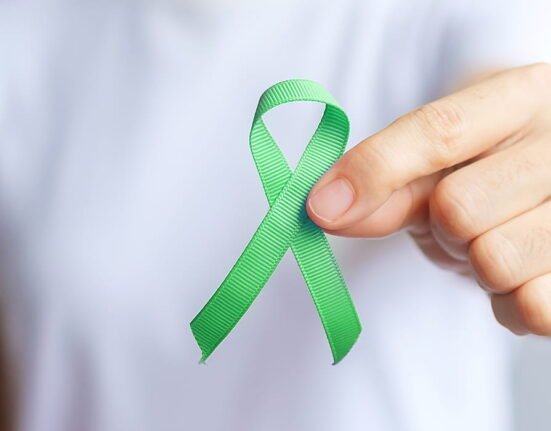OCD, often known as obsessive compulsive disorder, is a chronic disorder, which means it is a long-term condition that is characterised by recurrent compulsions and intrusive, unwanted thoughts (obsessions) to help relieve the anxiety that these thoughts create (International OCD Foundation, 2020). Relationship OCD (ROCD) patients are known to obsess over relationship or partner doubt (Doron et al., 2012). Every day life may be, or rather it will be, stressful when OCD is involved in a relationship. As an example, one of the individuals may escape everyday activities, anything that provokes their anxiety, be that the location or conversations, and engage in messing with normal activities and leave the other partner perplexed (Lebowitz et al., 2016). The non-OCD partner might become helpless; the OCD one, in its turn, might feel isolated or ashamed over time (Lebowitz et al., 2016).
Realising Rituals and Reassurance-Seeking
OCD rituals also sometimes appear very nonsensical to an observer: the person washes their hands, locks the door, and orders things again and again (American Psychiatric Association, 2013). The person with OCD does not do these rituals because they are fun; they do them as a temporary escape from extreme anxiety or uncertainty. Reassurance-seeking is a common compulsion in relationships. As an example, your partner can send constant questions, such as, Are you angry at me? Do you love me? Not because they have suspicions about you, but due to the influence of constant intrusive fear that something is wrong (Twohig & Abramowitz, 2021). One can get fed up with continually being asked the same questions, yet these repetitive questions are driven by the worry of the afflicted person and not a lack of affection or confidence.
Read More: Why Reassurance Feels Good But Doesn’t Always Help Anxiety
Communication and Sympathy
It is also possible to transfer the knowledge and wait patiently with your partner so that it can diminish his/her fear. Communication has to be resonant and open. Ask your friend if you want to know about his or her OCD, but you are never going to judge him/her (Abramowitz et al., 2008). Find the time to hear them out and offer encouragement with what they are experiencing (i.e. validating their feelings, i.e. say, I know you are concerned). An alternative to pinpointing is turning to calm statements to yourself that could be spoken aloud (So, I am scared when I see you so frustrated) (Twohig & Abramowitz, 2021).

Do your best not to speak in such a way that they will interpret it as dismissal of their fears, such as by saying something like “Just relax” or by downplaying their fears by saying that what they are being worried about is not as bad as what actually is worrying you (Abramowitz et al., 2008).
According to experts, criticism or blame may only aggravate the condition of OCD (Lebowitz & Omer, 2013). Rather, discuss with each other what causes their anxiety and what strategies have assisted them. Bear in mind that OCD is not a personality issue; it is a condition. You can make your partner feel safe and understood using your sympathy, patience, and a composed approach (Lebowitz & Omer, 2013; Twohig & Abramowitz, 2021).
Read More: How to Speak so that People Will Listen: Psychology Behind Communication
Setting Boundaries and Avoiding Enabling
It’s normal to want to help, but try not to involve yourself in the OCD cycle. Clinicians also refer to it as accommodating, when people close to them include extra steps, as always checking their locks or coming with the same reassurance, to protect the person against anxiety (Lebowitz et al., 2013). To take an example, when asked each time whether you were upset or not, you could feel as though you were helping, but instead, you are feeding the compulsion. Rather, give soft limits.
You can say something like, I realise that you are nervous, but I am not okay doing that, as a way to keep things calm and set your boundaries (Lebowitz et al., 2013). The boundaries can be used to make your partner independent of your help over time, as the accommodations contribute to the strengthening of OCD (Lebowitz et al., 2013).
Read More: Importance of Boundaries in Relationships
Therapy and Professional Support
OCD is very manageable, and treatments such as Exposure and Response Prevention (ERP) and Cognitive Behavioural Therapy (CBT) are regarded as the gold standard (Abramowitz, 2006; Foa et al., 2012). In ERP, the victim is carefully eased into feared scenarios without doing the regular ritual and comes to learn that one can get over the anxiety, where the anxiety just goes away. The so-called 15-minute rule requires individuals to postpone their desire by 15 minutes to get accustomed to living with anxiety (Twohig & Abramowitz, 2021).

Propose to look up an OCD specialist in case your partner is willing. Couples or family therapy can help both of you learn skills to cope effectively. You can even suggest researching some therapists or even attending one session. You cannot make a person undergo treatment, but you can give a piece of information or an inspiring success case, and this will make him/her willing to receive treatment (Foa et al., 2012; Abramowitz, 2006).
Read More: What Is Couples Therapy, And How Does It Work?
Self-Care and Mutual Support
You should also take care not only of yourself but also of your partner. The non OCD partner is not hard to burn out, and the OCD partner can sometimes also bring additional emotional load. Make sure that you get rest and rejuvenate by engaging in certain hobbies, exercises or get rest and make your partner also do the same (Abramowitz et al., 2008). Try some stress-wipe practices (just going out in the street, a mindfulness practice or a different one) and have healthy habits (good sleep, good meals), and both of you can use them.
You need to encourage social support through having friends, relatives, or even having a support group so that you can make every one of the groups have someone to express him or herself. The next time, remember you cannot give what you do not own. Being concerned about your health will also help you be strong on your own (Lebowitz et al., 2013).
Read More: Simple Self-Care Habits That Boost Your Mental Health
Practical Tips for Partners
- Educate yourselves
- Keep communication open
- Encourage treatment
- Avoid enabling
- Set clear boundaries
- Prioritise self-care
OCD may not be an easy encounter to cope with, being a couple; however, most couples manage to emerge stronger together. You can develop a good supportive relationship by making a distinction between the person and the disorder and collaborating, as well as respecting each other (Twohig & Abramowitz, 2021). Bear in mind, OCD is only one constituent of your partner, one part that does not define the person and one that will not prevent the future of you and your partner. Through rituals, reassurance and anxiety, you can emerge as a complete unit and then go on enjoying your relationship further with patience and compassion with the help of empathy and with the right help.
Conclusion
Being in a relationship with a person with OCD may not be easy, and yet it brings opportunities for growth and learning how to understand each other and fall in love. People with OCD face a medical condition, not personal shortcomings, and we can address it with empathy. Rituals, reassurance-seeking, irrespective of anxiety, are at the same time survivable with the help of open communication, healthy boundaries, self-care, and mental health professionals. Patience and dedication will allow one to develop a relationship that not only supports but also excels. Showing that love could be more powerful than the disease.
FAQs
1. Do people with OCD have trust issues?
Yes, people with obsessive-compulsive disorder (OCD) can experience trust issues, particularly within the context of relationships. In Relationship OCD (ROCD), a subtype, individuals often experience doubts and anxieties about their romantic relationships.
2. How can partners help with OCD?
Partners can support someone with OCD by educating themselves about the condition, encouraging professional help, practising patience and understanding, and setting healthy boundaries. They can also help by avoiding enabling compulsive behaviours and focusing on the individual’s progress, not just their struggles.
3. What is the 15-minute rule for OCD?
In Cognitive Behavioural Therapy (CBT), therapists use the ’15-minute rule’ in Obsessive-Compulsive Disorder (OCD) to help manage compulsions by delaying them for a set time. It involves resisting the urge to perform a compulsive behaviour for 15 minutes after an intrusive thought or anxiety-provoking situation. This delay helps individuals recognise that anxiety can decrease naturally over time, reducing reliance on compulsions.
References +
Abramowitz, J. S. (2006). Understanding and treating obsessive–compulsive disorder: A cognitive-behavioural approach. Mahwah, NJ: Lawrence Erlbaum Associates. https://www.routledge.com/Understanding-and-Treating-Obsessive-Compulsive Disorder/Abramowitz/p/book/9780805862110
Abramowitz, J. S., Deacon, B. J., & Whiteside, S. P. (2008). Exposure therapy for anxiety: Principles and practice. Guilford Press. https://www.guilford.com/books/Exposure Therapy-for-Anxiety/Abramowitz Deacon-Whiteside/9781606238765
American Psychiatric Association. (2013). Diagnostic and statistical manual of mental disorders (5th ed.). Arlington, VA: American Psychiatric Publishing.https://doi.org/10.1176/appi.books.9780890425596
Doron, G., Derby, D. S., Szepsenwol, O., & Talmor, D. (2012). Relationship obsessive–compulsive disorder: A conceptual framework. Journal of Obsessive Compulsive and Related Disorders, 1(4), 231–239.https://doi.org/10.1016/j.jocrd.2012.03.002
Foa, E. B., Yadin, E., & Lichner, T. K. (2012). Exposure and response (ritual) prevention for obsessive–compulsive disorder: Therapist guide. Oxford University Press. https://global.oup.com/academic/product/exposure-and-response-ritual prevention-for-obsessive-compulsive-disorder-therapist-guide-9780195335285
International OCD Foundation. (2020). What is OCD? https://iocdf.org/about-ocd/
Lebowitz, E. R., Panza, K. E., & Bloch, M. H. (2016). Family accommodation in obsessive-compulsive and anxiety disorders: A five-year update. Expert Review of Neurotherapeutics, 16(1), 45–53. https://doi.org/10.1586/14737175.2015.1101325
Lebowitz, E. R., & Omer, H. (2013). Treating childhood and adolescent anxiety: A guide for caregivers. Wiley. https://www.wiley.com/enus/Treating+Childhood+and+Adolescent+Anxiety:+A+Guide+for+Caregivers-p 9781119976968
Lebowitz, E. R., Vitulano, L. A., & Omer, H. (2013). Obsessive–compulsive disorder in youth: The role of family accommodation. Journal of Anxiety Disorders, 27(5), 486–493. https://doi.org/10.1016/j.janxdis.2013.05.002
Twohig, M. P., & Abramowitz, J. S. (2021). Cognitive-behavioural therapy for OCD: A guide for professionals. American Psychological Association. https://www.apa.org/pubs/books/cognitive-behavioral-therapy-ocd













Leave feedback about this